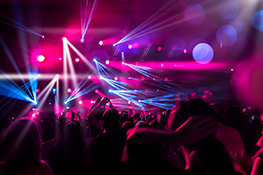The ROI of Investing in LED Stage Lighting: A Cost-Benefit Analysis
Introduction: Shining a Light on Savings
In the dynamic world of stage productions, lighting plays a pivotal role, setting the mood, enhancing storytelling, and captivating audiences. For years, traditional lighting technologies dominated the industry, but the rise of LED stage lighting has ushered in a new era of efficiency and cost-effectiveness. This article delves into a comprehensive cost-benefit analysis, exploring the compelling return on investment (ROI) that LED stage lighting offers.
Lower Energy Consumption: The Core of LED Savings
One of the most significant advantages of LEDs is their remarkably low energy consumption. Compared to incandescent or halogen lights, LEDs use significantly less power to produce the same level of brightness. This translates to substantial reductions in electricity bills, a crucial factor for both large-scale productions and smaller venues. The long-term savings are considerable, making the initial investment in LED lighting quickly pay for itself.
Extended Lifespan: Reducing Replacement Costs
The longevity of LED lights far surpasses that of traditional lighting options. While incandescent bulbs require frequent replacements, LEDs boast an incredibly long lifespan, reducing maintenance and replacement costs significantly. This translates to less downtime, fewer disruptions during productions, and a minimized need for purchasing replacement bulbs over time, resulting in considerable long-term cost savings.
Reduced Maintenance and Labor Costs
Less frequent bulb replacements inherently lead to reduced maintenance costs. The reduced need for technicians to replace bulbs frequently frees up valuable time and resources. Furthermore, the robustness of LEDs minimizes the risk of malfunctions and failures, leading to fewer service calls and reduced labor costs.
Enhanced Performance and Creative Control
Beyond the economic advantages, LED stage lighting offers superior performance. LEDs provide a wider range of colors, more precise color mixing capabilities, and superior dimming control. This enhanced creative control allows lighting designers to achieve stunning visual effects, ultimately enhancing the quality of the production and potentially attracting larger audiences.
The Initial Investment: A Long-Term Perspective
While the upfront cost of investing in LED stage lighting may seem higher than that of traditional lighting, it’s crucial to consider the long-term perspective. The substantial savings on energy, maintenance, and replacements quickly offset the initial investment, leading to a significant ROI over the lifespan of the lighting system.
Calculating Your ROI: A Step-by-Step Guide
To accurately calculate the ROI of LED stage lighting for your specific needs, consider these factors:
- Initial investment cost: Include the cost of the LED lights, fixtures, and any necessary installation.
- Annual energy savings: Estimate the reduction in electricity consumption compared to your current lighting system.
- Maintenance cost savings: Calculate the savings from reduced bulb replacements and maintenance.
- Lifespan of the LED lights: Factor in the extended lifespan to determine the long-term cost savings.
- Increased productivity and efficiency: Consider the value of reduced downtime and increased creative possibilities.
By carefully analyzing these factors, you can develop a comprehensive ROI calculation that demonstrates the long-term financial benefits of adopting LED stage lighting.
Conclusion: A Brighter Future with LED Stage Lighting
The evidence overwhelmingly supports the conclusion that investing in LED stage lighting offers a compelling return on investment. The combination of lower energy consumption, extended lifespan, reduced maintenance, and enhanced creative control makes it a financially sound and artistically advantageous choice for any stage production. By carefully considering the factors outlined in this cost-benefit analysis, you can illuminate your stage and your bottom line.


 Auditorium Construction Services
Auditorium Construction Services 